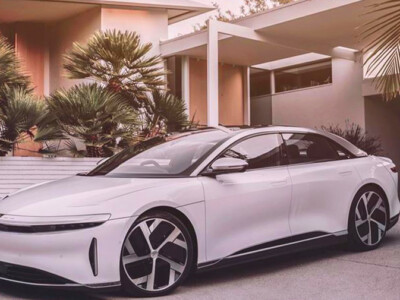
There is a reason why the great road trip is deeply ingrained in pop culture. It is a testament to the fact that cars have always been much more than basic transportation devices or mere machines.
Instead, they serve as a refuge away from home and work, a place to quietly be alone or hang out, listen to music, and have great conversations with a close group of friends or family.
With constant technological advancements, most new cars today offer more entertainment options than a basic stereo equipped with an AM/FM radio tuner or a CD player.
Instead, internet streaming services have taken center stage, allowing the driver and passengers to easily listen to and watch whatever they want, wherever they want.
In the premium segment, many cars also offer high-end sound systems from brands like Harman Kardon, Bowers & Wilkins, Meridian, and Burmester. The combination of streaming services and high-fidelity audio systems, in turn, provides car manufacturers with the opportunity to market their vehicles as high-fidelity mobile systems or home theaters.
Many new cars feature infotainment systems with Apple CarPlay and Android Auto connectivity, meaning that many music and audio apps available on your iPhone or Android smartphone can be accessed through your car’s main infotainment screen, provided your phone is connected.
For music lovers, popular apps available through Apple CarPlay and Android Auto interfaces include Spotify, Apple Music, Tidal, and Amazon Music. Note that, similar to most other CarPlay/Android Auto apps, both Apple and Google heavily restrict the user interface design to a few simple controls to minimize driver distraction.
In practice, this means that these apps are likely to look similar when displayed on the infotainment screen and won’t have the full range of advanced controls available on your phone or tablet.
Podcasts are gaining popularity, and both Apple CarPlay and Android Auto cater to these audiences with apps like Overcast, Pocket Casts, and the Apple Podcasts app (CarPlay only).
For those looking to broaden their tastes, apps like iHeartRadio, TuneIn, and Listnr allow users to listen to radio stations from around the country and the world. Book enthusiasts also have access to Amazon’s Audible service, specializing in longer-format audiobooks.
However, relying on Apple CarPlay and Android Auto also means that content streaming depends on your phone’s reception. If you plan to drive to a remote area, it may be convenient to download music, audiobooks, or podcasts before starting your journey.
Some car manufacturers have been trying to reduce their reliance on smartphone mirroring technologies by incorporating streaming into their native infotainment systems. The latest models from BMW, Mercedes-Benz, and Tesla are examples.
Some cars featuring Android Automotive (i.e., Android as a native infotainment system) have built-in Spotify apps.
These integrations can offer several advantages, such as providing a smoother user experience as the driver’s phone doesn’t need to be connected to the car to stream Spotify, as well as using the car’s data plan to play music.
Native Spotify integration may also offer less buffering and better streaming reception in more remote areas, as the car’s more powerful antenna is used.
However, the substantial audio quality may vary depending on the specific car model. The Spotify app available on the Tesla Model 3, for example, is limited to a maximum bitrate of 96 kbps, compared to the 320 kbps of the CarPlay/Android Auto equivalent app.
Video streaming services are much harder to find in vehicles due to the potential for driver distraction, and Apple CarPlay and Android Auto do not support video from apps like Netflix, Disney+, Amazon Prime, or other streaming services.
Instead, it largely depends on automakers deciding which streaming services to incorporate and the best way to do so safely within their native infotainment systems.
Currently, Tesla offers the best option in this regard, with all models in the range offering Netflix, YouTube, and Twitch services that can be viewed on the infotainment screen when the car is parked. In certain markets, Tesla also offers the Disney+ app, but it is unclear when Australian models will have access to this service.
Android is a versatile operating system available on smartphones and certain TVs, offering a plethora of streaming services. Through Android Automotive, Google has also recently become the native infotainment system for the latest models from car manufacturers like Volvo, Polestar, and Renault. Consequently, the American software giant has confirmed that it will bring the YouTube app to Android Automotive vehicles through a software update, starting with the Volvo C40 Recharge.
However, of all premium car manufacturers, it is perhaps BMW that has made possibly the grandest announcement to date regarding the introduction of video streaming services in the car.
Unveiled earlier this year at the CES technology exhibition, BMW Theatre Screen uses an ultra-wide 31-inch display (in a 32:9 ratio) with an 8K resolution and employs the Amazon Fire TV platform, incorporating services like Amazon Prime Video and Twitch.
This screen is expected to be available in upcoming flagship BMW models, including the next generation of the BMW 7 Series.







